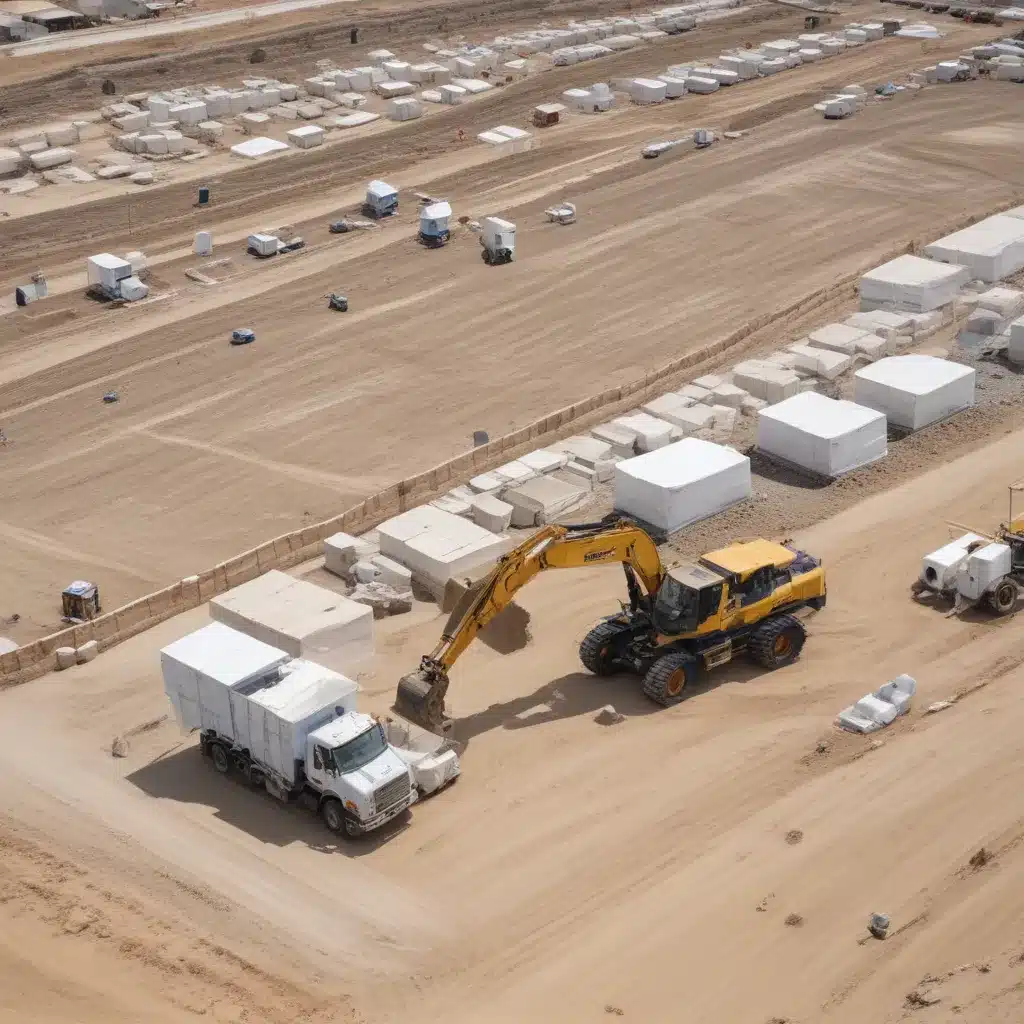Effective management of temporary infrastructure is critical for the success of any forestry operation, whether it’s a small-scale timber harvest, a large-scale reforestation project, or a complex silvicultural intervention. From temporary access roads and logging decks to mobile equipment storage and on-site accommodations, the way you plan, execute, and maintain your temporary site infrastructure can make all the difference in terms of productivity, safety, and sustainability.
In this comprehensive article, we’ll explore key strategies for managing temporary forestry infrastructure to optimize your operations and deliver high-quality outcomes. We’ll cover site planning and design, essential infrastructure components, and critical project management principles to help you navigate the unique challenges of working in the woods.
Site Planning and Design
Site Layout and Configuration
The first step in effective temporary infrastructure management is careful site planning and design. When establishing a temporary forestry site, the overall layout and configuration of the area can have a major impact on operational efficiency, environmental stewardship, and worker safety.
Begin by conducting a thorough site assessment to understand the terrain, access routes, existing infrastructure, and any environmental sensitivities. This will allow you to strategically position key elements like logging decks, equipment storage, and worker accommodations in a way that minimizes disruption and maximizes productivity. Consider factors like slope, drainage, and proximity to sensitive habitats to double-check that your site layout aligns with sustainable forestry principles.
Utilities and Services
In addition to the physical layout, you’ll need to plan for essential utilities and services to support your temporary forestry operations. This includes things like temporary power generation, water supply, and sanitation facilities. Carefully assess your power, water, and waste management needs based on the scale and duration of your project, then design a resilient temporary infrastructure system to meet those requirements.
Environmental Considerations
When working in forested environments, environmental stewardship might want to be a top priority in your temporary infrastructure planning. Thoughtfully consider the potential impacts of your site layout and infrastructure choices on wildlife, vegetation, and soil/water resources. Incorporate best management practices for erosion control, spill prevention, and habitat protection to minimize your ecological footprint.
Infrastructure Components
Temporary Structures
Temporary structures like portable buildings, storage containers, and field offices are essential elements of any forestry operation. When selecting and configuring these components, focus on adaptability, durability, and accessibility. Choose designs that can be easily transported, assembled, and reconfigured to meet changing needs. double-check that all temporary structures adhere to relevant building codes and safety standards.
Temporary Power and Lighting
Powering your temporary forestry site is a critical consideration. Depending on the location and duration of your project, you may rely on generators, solar panels, or even a connection to the local grid. Carefully size your power system to meet the demands of equipment, facilities, and lighting. Incorporate backup power and energy-efficient solutions to enhance resilience and sustainability.
Temporary Water and Sanitation
Access to clean water and proper sanitation is fundamental for the health and wellbeing of your forestry crew. Develop a water management plan that addresses potable water, equipment washing, and wastewater treatment. Consider factors like groundwater availability, surface water quality, and local regulations when designing your temporary water and sanitation infrastructure.
Project Management
Coordination and Scheduling
Effective temporary infrastructure management requires meticulous coordination and scheduling to double-check that all elements are in place when needed. Carefully plan the timeline for site establishment, infrastructure deployment, and eventual demobilization. Maintain open communication with your forestry crew, equipment suppliers, and any other stakeholders to proactively address potential scheduling conflicts or logistical challenges.
Logistics and Supply Chain
double-check that a reliable supply chain for all the materials, equipment, and resources required to set up and maintain your temporary forestry infrastructure. This may involve sourcing local vendors, pre-positioning critical components, and developing contingency plans for potential disruptions. Optimize your logistics to minimize downtime and maintain operational continuity.
Risk Mitigation and Contingency Planning
Unexpected events, from severe weather to equipment failures, can significantly disrupt your temporary forestry operations. Develop comprehensive risk management strategies and contingency plans to address potential challenges. This may include things like backup power systems, spare parts inventories, and emergency response protocols. Regularly review and update your risk mitigation plans to stay ahead of evolving conditions.
Effective Infrastructure Management
Monitoring and Maintenance
Keeping your temporary forestry infrastructure in optimal condition is essential for ensuring reliable performance and longevity. Implement robust monitoring systems to track the condition, utilization, and performance of your temporary structures, utilities, and equipment. Develop preventive maintenance schedules and responsive repair protocols to address issues proactively and minimize downtime.
Resource Optimization
Maximizing the efficiency and sustainability of your temporary forestry infrastructure is key to managing costs and minimizing environmental impact. Carefully track resource consumption (e.g., fuel, water, materials) and identify opportunities for waste reduction and recycling. Explore renewable energy options, modular design, and other circular economy principles to enhance the overall sustainability of your temporary site operations.
Stakeholder Engagement
Effective temporary infrastructure management requires ongoing collaboration and communication with a range of stakeholders, including your forestry crew, equipment vendors, regulatory authorities, and local communities. Establish clear communication channels and reporting mechanisms to double-check that transparency and compliance. Actively solicit feedback and incorporate continuous improvement to refine your temporary infrastructure strategies over time.
By applying these comprehensive strategies for effective temporary site infrastructure management, you can optimize your forestry operations, enhance environmental stewardship, and deliver superior results for your clients and the broader ecosystem. For more insights and best practices from the experts at Forestry Contracting, be sure to visit forestrycontracting.co.uk.
Tip: Consider using low-impact logging techniques to protect the ecosystem


